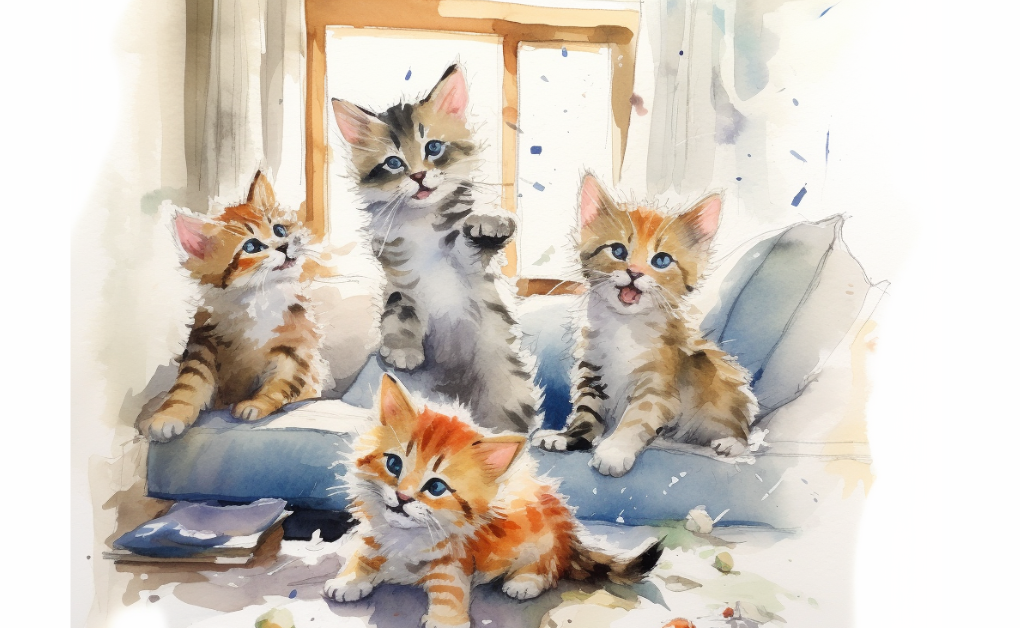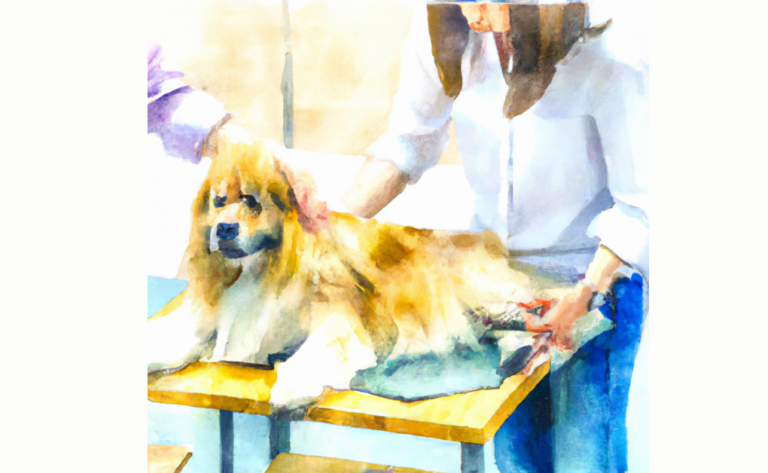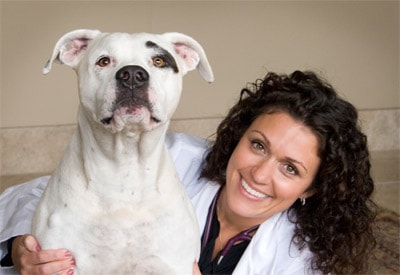How To Care For A Healthy Kitten
Introduction
When Emily brought home her energetic little furball, she couldn’t help but feel a mix of excitement and uncertainty about how to ensure her kitten’s health and happiness. Eager to provide the best care possible, Emily decided to dive into the world of kitten care, from proper nutrition to playful stimulation.
Caring for a kitten is both an exciting and significant commitment. These tiny, playful creatures have specific needs to ensure their healthy growth and development. As an owner, you’ll be tasked with various responsibilities, ranging from feeding and grooming to socialization and medical care.
This guide will walk you through the essentials of caring for a healthy kitten, equipping you with the knowledge you need to help your new feline friend thrive. Whether you’ve just brought home a new kitten or are considering adopting one, let’s delve into the fundamental aspects of kitten care to set your adorable companion up for a happy and healthy life.
Understanding Your Kitten’s Developmental Stages
Recognizing your kitten’s growth stages is crucial in providing the appropriate care at each development phase. Kittens undergo significant transformations in their first few months of life, acquiring various physical and social capabilities.
Neonatal Stage (Birth to 2 weeks)
Newborn kittens, during their first weeks, are incredibly frail. They arrive in the world blind and deaf, completely dependent on their mother cat for survival. These indoor kittens spend the majority of their time asleep or feeding. If you’re caring for motherless kittens at this stage, they’ll need bottle-feeding and assistance with waste elimination.
Transition Phase (2 to 4 weeks)
During this period, kittens open their eyes, and their ear canals unfold, gradually introducing them to a world of sights and sounds. By the end of this stage, they’ll start investigating their environment, although a bit clumsily.
Socialization Phase (4 to 12 weeks)
This phase is critical for the kitten’s development. Here, kittens learn to interact with other cats, different animals, and humans. Ensuring positive experiences during this time is key to their development into well-adjusted adult cats. This stage is also when they start eating solid food and get acquainted with the litter box.
Juvenile Stage (3 to 6 months)
The juvenile phase sees kittens resembling human teenagers in many ways. They are likely to be highly active and a bit naughty. This period is critical for social play, influencing their behaviors as adults. Cat toys can be beneficial in engaging them during this active phase.
Adolescence to Adulthood (6 months and onwards)
By six months, kittens typically reach sexual maturity. If not already done, this is the recommended time for spaying or neutering to prevent unwanted behaviors and litter. While kittens usually reach their full size in one year, they might continue to fill out until they’re around 18 months old.
Understanding these stages can guide you in meeting your kitten’s evolving needs, from dietary and healthcare needs to training and socialization. Such preventive care will ensure fewer health issues in the future and less reliance on emergency care. Relying on cat services and following kitten care tips will also make your journey in providing care for your kitten more straightforward and enjoyable.
Proper Nutrition for Growing Kittens
The right nutrition is pivotal for your kitten’s growth and overall development. Kittens’ dietary needs significantly diverge from adult cats due to their accelerated growth and high energy levels. Here are some factors you should consider when catering to your growing kitten’s nutritional needs:
High-Quality Nutritious Food
Kittens need more protein, fats, and calories than adult cats to sustain their rapid growth, high activity levels, and the development of their muscles, bones, and organs.

The food should contain premium animal protein sources such as chicken, fish, or beef, resembling the diet they would receive from a mama cat.
Comprehensive Diet
A balanced diet with appropriate proportions of proteins, carbohydrates, fats, vitamins, and minerals is vital. Commercially available kitten foods are typically formulated to offer this balance, ensuring proper cat nutrition.
Wet or Dry Food
Both wet and dry foods can suit kittens. Wet food is often more palatable and can aid in keeping your kitten hydrated, an important aspect of parasite control. However, feeding some dry food can be beneficial for dental health. Some owners opt to offer a blend of both types.
Regular Meals
Given their small stomach and high energy requirements, kittens should be given small meals regularly throughout the day. As they grow, you can slowly decrease the frequency of meals.
Clean Water
Ensure your kitten always has access to fresh, clean water. Hydration is key, especially if you’re primarily feeding dry food.
Avoid Human Food
Some human foods can harm daily feeding times for kittens, and others could lead to weight gain and related health issues. Adhere to food and treats explicitly designed for kittens.
Smooth Transition
When it’s time to transition your kitten to adult cat food (usually around their first birthday), do so gradually to avoid gastrointestinal upset. Gradually increase the amount of the new food in the old over one or two weeks.
Your vet can provide personalized advice on feeding your kitten. They can help you determine the best type and quantity of food based on your kitten’s age, weight, and health status.
Formulating a Feeding Schedule
Developing a feeding schedule for your kitten is key to their growth and well-being. The feeding frequency depends on age; kittens under six months old need three to four meals daily due to their high energy demands and small stomachs. As your kitten grows, you can slowly reduce this to the two meals typical for adult cats. Consistent daily feeding times are essential as they help their digestive system operate efficiently and offer a sense of security.
Portion sizes should be based on the feeding guidelines given by the kitten’s food manufacturer but may need adjustments according to your kitten’s specific needs, age, size, and activity level. A mix of both wet and dry kitten food is usually recommended for each feeding. Wet food aids in hydration and palatability, while dry food supports dental health. Regular weight and health checks are essential for cat preventive care, and any significant changes should be discussed with your vet. Remember, if a diet change is needed, transition gradually over a week or more to prevent digestive upset. Always ensure your kitten can access fresh water and avoid feeding human food. Your vet can provide personalized advice based on your kitten’s health status.
Cats and kittens, especially long-haired cats, may require additional grooming attention. Remember to incorporate positive reinforcement in your kitten behavior training regimen. Consult your vet for the necessary cat medication and parasite prevention strategies.
Regular Vet Check-ups and Vaccinations
Routine veterinary check-ups and immunizations are essential for your kitten’s health and longevity. These appointments allow your vet to monitor your kitten’s growth and development, ensuring they achieve the necessary milestones at the right age. They also provide a platform to discuss concerns or questions about your kitten’s health, behavior, dietary needs, or care routine.
When you bring your kitten for these visits, your vet performs a meticulous physical examination. They’ll inspect your kitten’s eyes, ears, mouth, skin, coat, and abdomen, listen to their heart and lungs, and palpate their joints and muscles. This thorough evaluation aids in the early detection of potential health issues, which can be easier and less expensive to manage when caught early.
Vaccinations form a critical aspect of these appointments. Kittens require a series of immunizations within their initial few months to shield them from potentially severe or even life-threatening diseases. These infectious diseases include feline panleukopenia (feline distemper), feline calicivirus, herpesvirus type I (rhinotracheitis), and rabies.
Moreover, consistent check-ups allow your vet to carry out necessary preventive care. This includes deworming and safeguarding against fleas and ticks, which can cause diarrhea or other health issues. Your vet will also discuss the ideal time to spay or neuter your kitten. Achieving sexual maturity can lead to unwanted behaviors and health complications, so this discussion is critical.
In addition, services like microchipping may also be discussed for your pet’s safe return should it ever get lost. Also, kittens are naturally playful and can quickly get bored; hence, owners should provide ample high-protein food and water available at all times for their growing needs. Providing heartworm prevention is a significant aspect of maintaining a healthy kitten that many owners should pay attention to. Keeping a close eye on your kitten’s overall health and well-being ensures a long-lasting companionship for many years.
The Importance of Spaying or Neutering
Spaying (for female cats) and neutering (for male cats) are surgical procedures to prevent cats from breeding. These procedures often referred to collectively as “desexing,” carry significant health and behavioral benefits and contribute to the larger issue of cat overpopulation. Here’s why they are important:

Health Benefits
Spaying and neutering reduce the risk of certain health problems. Spayed females have a lower risk of mammary cancer and no risk of uterine or ovarian cancer, while neutered males have no risk of testicular cancer. Additionally, spaying eliminates the risk of pyometra, a potentially life-threatening uterine infection.
Behavioral Improvements
Desexing can lead to a reduction in certain behaviors. Neutered males are less likely to roam, fight with other cats, and spray strong-smelling urine, behaviors driven by the urge to mate. Spayed females will not go into heat, which can cause excessive vocalization and attract unwanted male attention.
Population Control
Millions of unwanted cats end up in shelters yearly, and many are euthanized due to a lack of available homes. By spaying or neutering your cat, you contribute to the effort to control the cat population, reducing the number of kittens that end up homeless.
Generally, vets recommend these procedures to be done around six months of age, but they can be performed earlier. It’s important to consult with your vet to determine the best timing for your kitten. Remember, spaying and neutering are one-time procedures that provide lifelong benefits.
Litter Training Your Kitten
Training your kitten to use a litter box is usually straightforward, as cats naturally prefer to eliminate it in a specific, sandy area. Here’s a step-by-step guide on how to do it:
Choose the Right Litter Box
The litter box should be easy for a kitten to get in and out of. Choose one with low sides. As the kitten grows, you can transition to a larger box with higher sides. The box should also be big enough for your cat to turn around comfortably.

Select Appropriate Cat Litter
Many types of cat litter are available, from clumping clay to biodegradable options. For kittens, it’s best to start with a non-clumping litter, as they may be tempted to taste the litter, and clumping varieties can cause digestive issues if ingested.
Locate the Litter Box Correctly
Cats prefer a quiet, accessible location for their litter box, away from busy areas, food and water dishes, and noisy appliances. If you live in a multi-story home, consider providing a litter box on each floor.
Show Your Kitten the Litter Box
Place your kitten in the litter box after meals and naps. They’ll naturally want to eliminate at these times. Let them explore and get used to the texture of the litter under their paws.
Keep the Litter Box Clean
Cats are clean animals and may refuse to use a dirty litter box. Scoop the box daily and change the litter regularly, usually once weekly, for non-clumping litter. Avoid harsh chemicals or strong-smelling cleaners, which can deter your kitten from using the box.
Never Punish Accidents
If your kitten eliminates outside the box, clean up without a fuss. Never punish your kitten, as this may create fear and anxiety, leading to further litter box problems.
Remember, most kittens will naturally use the litter box once they understand its purpose. If your kitten consistently struggles with litter box use, consult your vet to rule out any underlying medical issues.
Grooming Essentials for Kittens
Grooming is essential to kitten care as it helps maintain their health and well-being. Here are the key aspects of kitten grooming:
Brushing
Regular brushing is essential, even for short-haired kittens. Brushing helps remove loose hair, reduces hairballs, and keeps your kitten’s coat clean and tangle-free. It also allows you to check for fleas, ticks, or skin issues. Start slowly and gently, using a brush designed for kittens, and gradually increase the brushing time as your kitten gets comfortable.
Bathing
Kittens rarely need baths as they’re excellent self-groomers. However, if your kitten gets into something messy or sticky, you might need to bathe them. Use a gentle, cat-specific shampoo, and ensure the water is warm but not hot. Make the experience as calm and quick as possible to reduce stress.
Nail Trimming
Kittens’ nails should be trimmed regularly to prevent them from becoming too sharp. Use a cat nail clipper or grinder, and only trim the clear part of the nail to avoid cutting quickly, which can cause pain and bleeding. If unsure, your vet can show you how to do it safely.
Ear Cleaning
Check your kitten’s ears regularly for any signs of dirt, wax, or infection. Clean them gently with a soft, damp cloth or a cotton ball, but never insert anything into the ear canal. If your kitten’s ears seem dirty or they are scratching their ears frequently, consult your vet.
Dental Care
Good dental hygiene starts early. Use a cat-specific toothpaste, finger brush, or cat toothbrush to clean your kitten’s teeth regularly. This will help prevent dental disease in the future such as periodontal disease, fractured teeth and stomatitis.
Remember, grooming is not just about keeping your kitten looking good; it’s also an opportunity to check for any signs of health issues and to bond with your kitten. Start slowly and make grooming a positive, rewarding experience for your kitten.
Kitten-Proof Your Home
Kitten-proofing your home is an essential step in caring for a healthy kitten. Before bringing your new furry friend home, you must ensure all potential hazards are out of reach. Bundle electric cords and place them away from where your kitten can get to them. Put small items, plants that are poisonous to cats, and insect traps away from tiny paws.
Close the toilet seat lid, kitchen cabinets, and the lids or doors to the washers and dryers. Block small spaces, such as the gap between the refrigerator and the wall and underneath cabinets, as much as possible to prevent your kitten from hiding or getting stuck. Taking these precautions will help keep your kitten safe in its new home!
Frequently Asked Questions
Disclaimer: The information provided on this veterinary website is intended for general educational purposes only and should not be considered as a substitute for professional veterinary advice, diagnosis, or treatment. Always consult a licensed veterinarian for any concerns or questions regarding the health and well-being of your pet. This website does not claim to cover every possible situation or provide exhaustive knowledge on the subjects presented. The owners and contributors of this website are not responsible for any harm or loss that may result from the use or misuse of the information provided herein.







